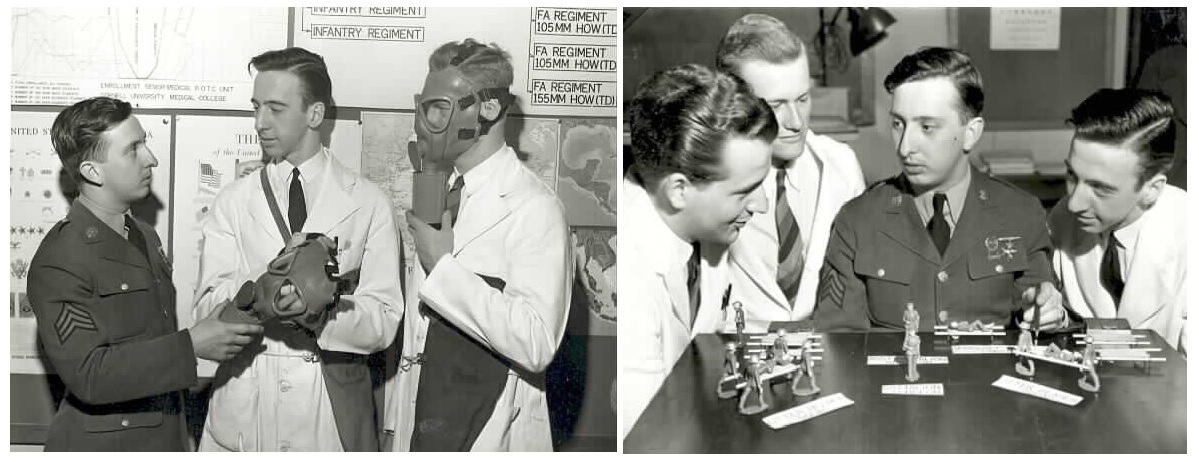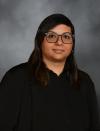By on April 30, 2020 - 12:53pm

It is often said that “necessity is the mother of invention” and in times of crises, accommodations must be made in order to adapt to uncertain situations. In the aftermath of World War I, Weill Cornell Medicine offered an elective course in military medicine in an attempt to prepare its medical students to enter into the military. According to the medical college’s Announcements from 1922 to 1952 (digitized by the Medical Center Archives and made available online here), this four-year elective course, which ran for roughly 30 years, was designed to quickly supply the U.S. Armed Forces with well-trained medical professionals. The inclusion of military medicine within the medical college’s educational curricula is a prime example demonstrating Weill Cornell Medicine’s history of preparing for crises.
Between 1922 and 1936, the elective course was entitled “Military Science and Tactics,” and was designed to prepare Weill Cornell Medicine (then known as Cornell University Medical College, or CUMC) medical students to join the Medical Section of the Officers Reserve Corps, U.S. Army as commissioned officers upon graduation. This elective was comprised of didactic lecture, recitation, and one summer of fieldwork at the Field Service School in Carlisle, Pennsylvania. Classes included subjects such as military law, hygiene, medical tactics, disease prevention, development of hospitals, medical administrative management, first aid, and more.
During World War II, the “Military Science and Tactics” elective course was re-branded as simply “Military Medicine.” Much like its earlier iteration, this course of study was still designed to complement CUMC’s regular curriculum, however, with the war raging in Europe and the Pacific, the classes increased in content. Similarly, upon completion of the program, rather than become members of the Enlisted Reserve Corps of the U.S. Army, graduates of the World War II era Military Medicine course would become commissioned 1st Lieutenants of the U.S. Army Medical Corps.
The college Announcements from 1941 to 1945 detail the first year of Military Medicine as focusing upon “the organization and Administration of the Army, particular attention being paid to the organization of the Medical Department, military courtesies and customs of the service, military law and map reading, and medical administration in mobile units.” In the second year, students focused upon the “functions and operations of the arms and services” and “the solution of map problems teaching the use of Medical Department troops serving with the other arms and services in simulated campaigns.” In the third year, students studied “prevention and control of communicable diseases, military sanitation and first aid, food and water and their relation to disease, and the medical aspects of chemical warfare.” In their fourth year, students focused on “medico-military history, leadership, the conduct of physical examinations, medical and surgical diseases particular to war, the organization and employment of the Medical Service of a division and larger forces, the rules of land warfare, property accounting, and the rights, privileges, and duties of officers of the Reserve Corps.”
In the post-war period (1946 to 1952), the Military Medicine course remained, although only healthy young men were permitted to participate. (Other medical students were allowed to observe, but not formally enroll). After graduating from CUMC and receiving their medical degree, students were offered a First Lieutenant’s commission in the Medical Corps of the U.S. Army Reserve or the U.S. Air Force Reserve. The Military Medicine elective offered in the postwar period mirrored much of what previous students studied, however classes in military psychiatry, atomic warfare, chemical warfare, medical research development, and aviation medicine were also added to the curriculum.
Although the classes offered within the Military Medicine elective evolved over the years, at its core, the course helped prepare future doctors with the skills necessary to help others during major military crises and serves as an example of Weill Cornell Medicine’s history of adapting to times of uncertainty.
Photographs: Military Medicine classes in 1942 (Accession numbers P -04652 and P-04651)
This blog is part of a new series from the Medical Center Archives of NewYork-Presbyterian/Weill Cornell Medicine entitled “Courage Under Crisis,” demonstrating the medical center’s role in previous crises. Due to current social distancing recommendations, research for this series relies in large part on digitized archival publications and images available online, as well as reliable secondary sources such as the 2016 publication Weill Cornell Medicine: A History of Cornell’s Medical School by Antonio M. Gotto, Jr., MD and Jennifer Moon.
Blog Category: Courage Under Crisis




